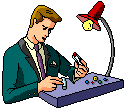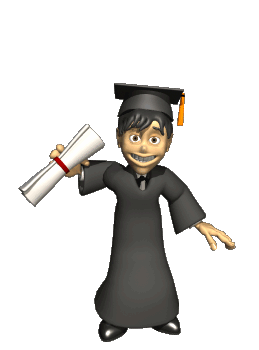PROJECT TITLE
RE-THINK MY WORK WITH TIC
1. PROJECT BACKGROUND
1.1 High School
High scholl Loyola for Science and Innovation was created on January 6, 2010, in partnership with the Ministry of
Municipal Education, Loyola Foundation and the Seine, is located in the Tuscany neighborhood in Medellin, is a public school and
City. He began work on 1 February 2010 with 105 students from eighth grade of the most vulnerable
City, who made an admission process led by the Seine and the Ministry of Education.
It currently has 210 students in grades eight and nine, divided into seven groups: four of eight and three of nine, with
approximately thirty students each, distributed collaborative tables of four to five students.
The institution has a pedagogical model based on the development of collaborative learning projects in Science and Technology,
a competency-based approach, in which the student is the protagonist in the construction of their own knowledge, strategies
didactic and methodological line about learning scenarios supported by ICT.
There is a comprehensive project that generates the collaborative spaces in classes, supported by the practices of
laboratories, which lead to the development of general and specific skills.
1.2 THE TEACHER
After a long selection process, which took into account skills, leadership, training and creativity became part of the
payroll of the educational institution and Ullenid Grove Buitrago Clementina Jimenez Vasquez, who are characterized by the search
constant new ways of imparting knowledge through the use of ICT.
With extensive experience teaching in various educational institutions which had stood by his personal commitment
training to enable them to innovate in your work, they went to break traditional patterns of teaching in areas
servants, and computer technology and Spanish language, respectively.
Both the teacher as Ullenid Clementina, serve as faculty in the eighth and ninth grades of basic school, where
had to find alternative work to do virtual students understand that the Internet was not just social networks and e
as sources of communication and entertainment, but were also a rich source of resources that facilitate knowledge.
Were thus integrating all the resources offered by the virtual world to the daily work of the classes, changing the notebooks
torn sheets and lines full of nonsense written by interactive notebooks full of possibilities, where your creativity and enjoy them
allow easier access to cognitive development, while those closer to the real world requires the development of a
specific skills.
Getting children and adolescents change their conception of computer use as a source of entertainment to a vision of
work was an arduous task that required creativity, patience and lots of choice, both students and teachers.
2. PROJECT OBJECTIVES
The school emerged as an innovative concept of education, the challenges of the XXI century set out to change the old methods
"language chalk and board" for a more current and consistent with the actual context of the students.
To this extent, the students sought leave their notebooks full of notes left and impractical and return interactive
thus developing the skills required for social interaction and work.
Consequently, the project's educational objectives essential transformation of the traditional approach to school by a virtual
and innovative, according to the digital age as well as access to knowledge through a playful, independent and creative, allowing
Students re-create their tasks with a practical and inclusive.
Therefore, this project aims to encourage our young students to become innovative, creative, dreamy, reflective and
school autonomy. That there is another view of the use of technologies, which understand that the internet is not only chat, music and porn
but offers many educational alternatives.
It also provides the opportunity for teachers, parents and students break the school closed scheme, limited to
four walls and extend to all areas where there is a computer with Internet connectivity, 24 hours a day.
Finally, the project aims to develop in students the skills necessary to confront a technological society
with global vision and future.
3. THE PROCESS OF PLANNING AND PROJECT ORIGIN
The project comes as a need for change in the actual context of classes, where the subjects studied apathy and demotivation
for the performance of academic duties, was notorious among students.
In this perspective, anxiety gripped the teachers, who were given the task of studying and seeking new ways
methodologies and resources that contribute to changing this situation as bleak, and that was how they saw in the Tics, an alternative
innovative and contextualised according to the requirements of that education changes needed.
The first challenge we had to overcome was the acquisition of resources to facilitate the work proposed, for this is attended
several agencies and organizations, including Medellin Digital, who support the idea, provided 30 laptops that drove
project greatly.
Another institution that was linked with technological equipment, was the Ministry of Education, who provided a digital dash and a Video
Beam.
These teams began a project that was initially compared to a utopia, because the first thing to do was to change
the attitude of children and adolescents to the technology and find ways to integrate social networks and mail tools
used by them, classes as an educational resource and learning.
The experience was very satisfactory and successful, because although we are still short of resources, since it has increased the number of
These students are not well, we now have more autonomous and innovative young people with a sense of belonging, love and knowledge
what they do with creativity and resourcefulness, they know that classrooms are not only in school but are open that are also in
their homes and anywhere they can connect to a computer and have Internet access, with teachers who
can interact from anywhere, anytime, either through chat messages or sharing websites.
For teachers, this has meant an extra commitment, given in a constant search for information, knowledge, new
knowledge that have been rewarded in a more active and focused young people with new skills to cope with a demanding world.
4. CURRICULAR CONTEXT OF THE PROJECT
Loyola College Educational institution for Science and Innovation is conceived as a public institution and as such is defined in the
terms of the Constitution and the Law, which defines its inclusiveness, however, is taken as a commitment to education
jurisdiction, where the use of technology is an integral part of their training and application of new methodologies mediated
the development of curriculum guidelines of the Ministry of National Education and National Education Plan and Development, seeking
channels for its work meshes with both the workplace and with levels of technical training, technology and higher education.
In this context, it is working with project-based, using a macro for each grade and this year is developing Eco-health
Housing for eighth and ninth, which are the backbone that integrates all areas of knowledge and laboratories, streamlining and work
collaborative
Re-create my work with ICT project is the cross, as it is immersed in all subjects becoming the leading work
that characterizes the school currently has "Using virtual notebooks"
The project is oriented from the area of technology and Spanish language, which every day looking for resources and implement different
virtual tools, so that students do their homework and then showing their website on the platform and
blogs.
4.1 THE TECHNOLOGY CONTEXT
Organization of technological resources
The institution has at the moment with 30 laptops, five of which are damaged. So that the priority
for use lies with the technology area, where resources are addressed later applied in other areas.
To provide the possibility to use within the institution to the other areas, they are given six to seven teams per group corresponding
collaborative one per table. These are complemented by some students' personal PC, notebooks instead of the lead
daily to the institution to develop academic content.
On the other hand, teachers also are given the opportunity to use the board in class digital video and beam, which complement
the teaching-learning process.
Level or degree of access to available technology
The entire student body is familiar with the technology that the College has, so their knowledge of managing PCs and
its software, is relevant as well as other resources, such as the dashboard and Video Beam. To them have become
key tools of teaching-learning process so that access them each that require it, having complete autonomy to
its use.
Point of access to technology resources
Inside the hospital, all spaces are subject to access to technology resources, so it is not unusual to see the
students in the hallways, patios or social sites, working on their computers, without discounting the classrooms and laboratories.
The work started or directed from the school, is followed, supplemented and / or drawn from their homes, where most
of them has a computer and internet access, for those who do not have this possibility, they do so from public libraries
schools near their homes with rooms interactivity or simply from internet lounge.
Resources belonging to the institution only intended to work within it, and although it has budgeted for future
immediately provide students with the equipment so they can take them home, now is not possible due to the small amount
available for work in school and also by the great risk involved for both these to the same learners.
However, this does not mean that outside the institution's students have no access to internet, because as explained before, the vast
Most have computers at home or nearby sites to which they can connect, share necessary since much of the
academic work, it must be done outside the institution.
Technological aspects relevant to the project
The level of resource management and technological equipment for students of the institution is very high, which puts them in a situation
privileged over other students their age and grade in other schools.
The autonomy that show the use of technology as needed, the evidence in their virtual sites, which are
full of creativity and knowledge, enabling them to give support to others who want to learn how to use
virtual programs.
This has inspired students the opportunity to share their knowledge with people within the community and educational and
still do not have skills in handling new technologies, emerging two sub-projects that have come to enrich this
significant experience, which have involved both parents as their own peers.
These are: "Awareness DIGITALA PARENTS" where freshmen empower parents in the use of
virtual tools used in the institution.
This subproject has been very successful as they have parents and children closer to the virtual world by integrating the support
real and effective teaching-learning process of children and youth.
PEER: subproject that has high expectations among students, where students are more experienced in the management of
TIC tutors serve those students who have some shortcomings in its implementation, in order to level them.
5. PROJECT MANAGEMENT OR APPLICATION
The project itself is being implemented in the institution since last year, growing richer with their own
experiences he provides.
It should be noted that began with the 105 students who began school, becoming extended to other groups which become
the institution, in this case, the four new groups of eighth grade students and complementing the work is integrated
collaborative working methods of the students.
This means that the project is inclusive to the extent that a group of students is responsible for out ahead, what has
taught values necessary for social coexistence.
This workflow has been very relevant to the success of the proposed activities from the project because it involves each
but according to the group.
All this will be routed from a motivating and interesting activities directed from the different areas, which are highlighted
proposals for research work as Detectives Tics, which introduces them to find information and resources in cyberspace or Island
Project that takes to travel the world in a fun project while teaching them how to approach and follow one
Various activities are designed to develop academic periods, since the project covers the entire school year which provides
the chance to explore all its facets and to continue making regular feedback processes.
All this makes it a flexible, easy to apply in any area and for every teacher who wants to. In the hospital, all
involving teachers have left him little by little, implementing it in your work.



.jpg)
.jpg)
.jpg)













